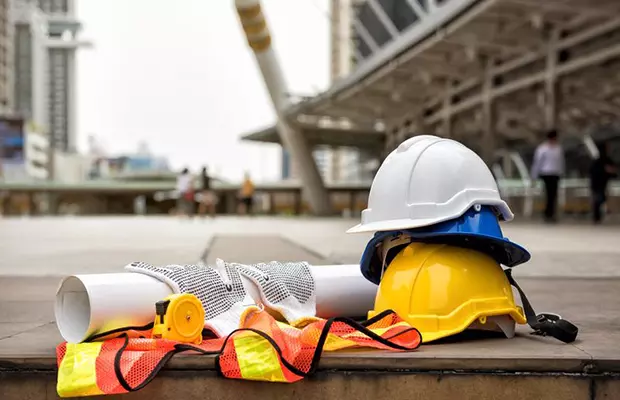The construction industry is a vital pillar of urban development and economic growth, driving the creation of infrastructure that shapes the world’s landscapes. Yet, this sector is also synonymous with high-risk environments, where the safety of workers is perpetually at stake due to the dynamic and often challenging nature of construction sites. While essential, traditional safety measures sometimes need to be revised to mitigate the myriad hazards present. Enter the groundbreaking advent of distance measuring sensors, a technological innovation poised to revolutionize safety protocols in construction. These advanced sensors offer a new dimension of protection, enabling precise monitoring and detection of potential dangers, thus paving the way for proactive safety interventions. This article explores the transformative potential of distance sensors in enhancing construction site safety, highlighting their critical applications and the tangible benefits they bring to the forefront of industry practices.
Enhancing Situational Awareness
In the environment of a construction site, maintaining situational awareness is crucial for preventing accidents. Distance sensors emerge as critical tools in this quest, offering the capability to continuously monitor the proximity of workers to hazardous areas and moving machinery. By integrating these sensors into construction equipment, an automated alert system can be established, warning operators of imminent risks and preventing potential collisions. This section delves into the mechanics of how distance sensors function as the eyes of the construction site, fostering a safer workspace where every move is informed, and every danger is anticipated. Through advanced detection and alert systems, these sensors effectively reduce the risk of human error, ensuring that safety measures are proactive rather than reactive. This technology helps create a culture of safety that permeates every layer of a construction project, making the well-being of workers a constant priority.
Preventing Falls and Accidents
Falls from heights represent a significant threat to construction workers, often resulting in severe injuries or fatalities. The deployment of distance sensors around the perimeters of elevated work platforms and open voids introduces a critical safety layer, actively monitoring and alerting when individuals or equipment come dangerously close to edges. This part of the article examines the technology underpinning these sensor systems. It evaluates their effectiveness in creating invisible barriers that guard against the peril of falls, illustrating their impact through real-life applications and success stories. Integrating these sensors with personal protective equipment (PPE) offers safety, ensuring that workers are immediately aware of potential fall hazards. This showcases the versatility and adaptability of distance sensors in enhancing onsite safety protocols.
Monitoring Structural Stability
The integrity of structures under construction is a paramount concern, with the potential for catastrophic failure posing a grave risk to workers and the public. Distance sensors offer a sophisticated solution capable of detecting subtle shifts and deformations that may precede structural shortcomings. This section explores the application of sensor technology in the real-time monitoring of buildings and infrastructures, highlighting how early detection of instability can lead to preemptive action, thereby safeguarding lives and assets. The data collected by these sensors helps with quick navigation and adds to long-haul insights into the behavior of structures under various stress conditions, improving future construction methodologies.
Improving Equipment Safety
Heavy machinery and equipment are indispensable to construction operations but come with their own set of safety challenges. The incorporation of distance sensors enhances the safety of machinery operations by identifying and reacting to the presence of workers or obstacles within operational blind spots. This segment sheds light on specific instances where sensor technology has been effectively utilized to prevent machinery-related accidents, emphasizing the role of automation in ensuring equipment safety. This proactive approach to machinery safety underscores the importance of technological intervention in mitigating risks, further establishing a safety-first culture within the construction industry.
Facilitating Safe Navigation and Evacuation
Navigating a construction site, especially in emergencies, requires explicit, safe pathways to ensure personnel’s swift and orderly evacuation. Distance sensors can play a pivotal role in emergency preparedness, aiding in the real-time mapping of safe evacuation routes free from hazards. This section discusses integrating sensor technology into emergency response strategies, focusing on its capacity to adapt to evolving situations and guide workers to safety amidst chaos. Implementing these sensors enhances the effectiveness of emergency evacuation plans. It instills confidence and security in the workforce, knowing that measures are in place to protect them in critical situations.
Conclusion
Integrating distance-measuring sensors within the construction industry marks a significant milestone in pursuing workplace safety. By saddling the force of cutting edge detecting technology. Construction sites can transform into environments where risks are not just reacted to but anticipated and mitigated. From enhancing situational awareness to ensuring the structural integrity of in-progress builds and from improving the safety of equipment operations to facilitating emergency evacuations, distance sensors stand as a testament to the industry’s commitment to safeguarding its workforce. As development rehearses proceed to advance and embrace technological innovations, the role of distance sensors in shaping safer, more efficient work environments will undoubtedly expand, further embedding these advanced tools in the foundation of modern construction safety protocols.






